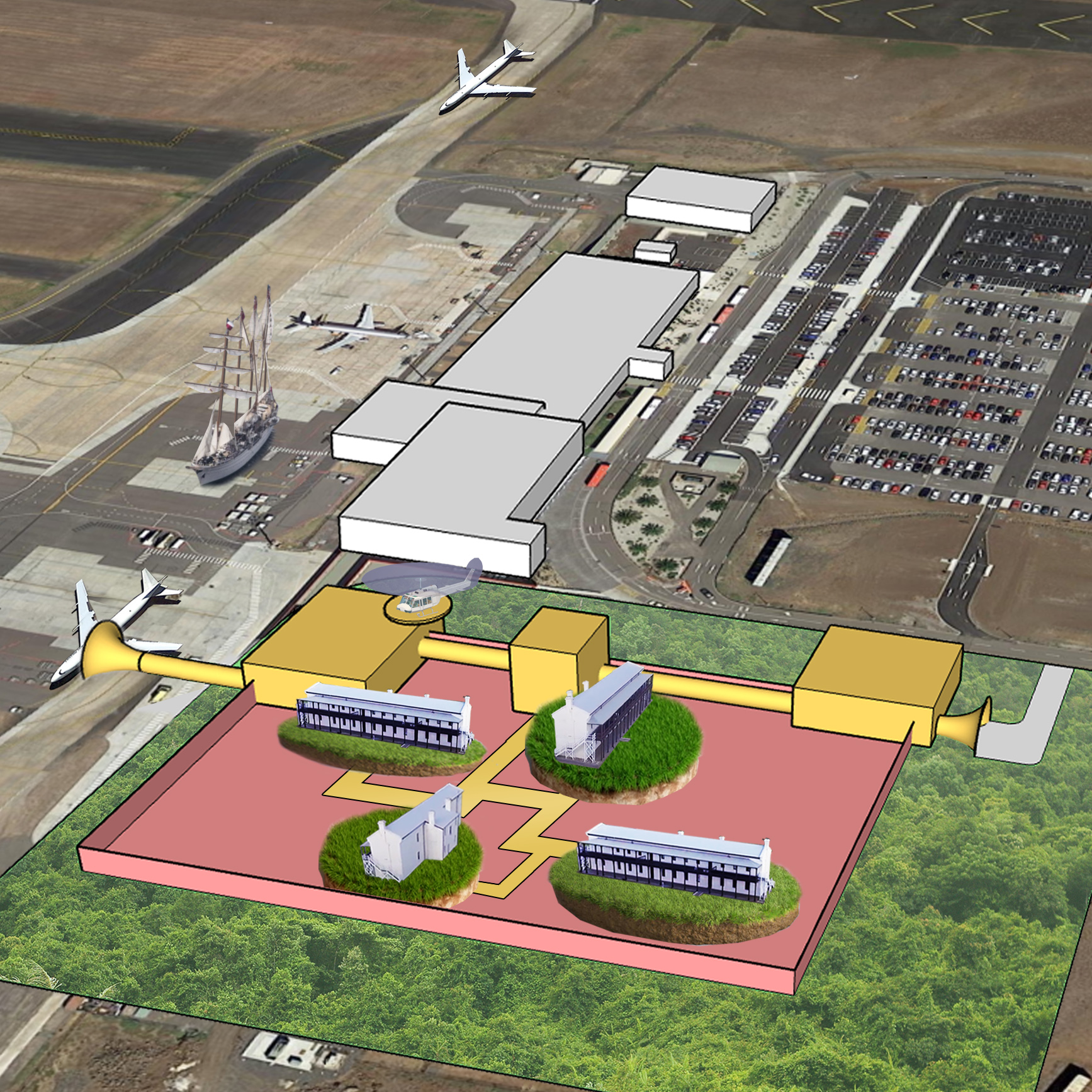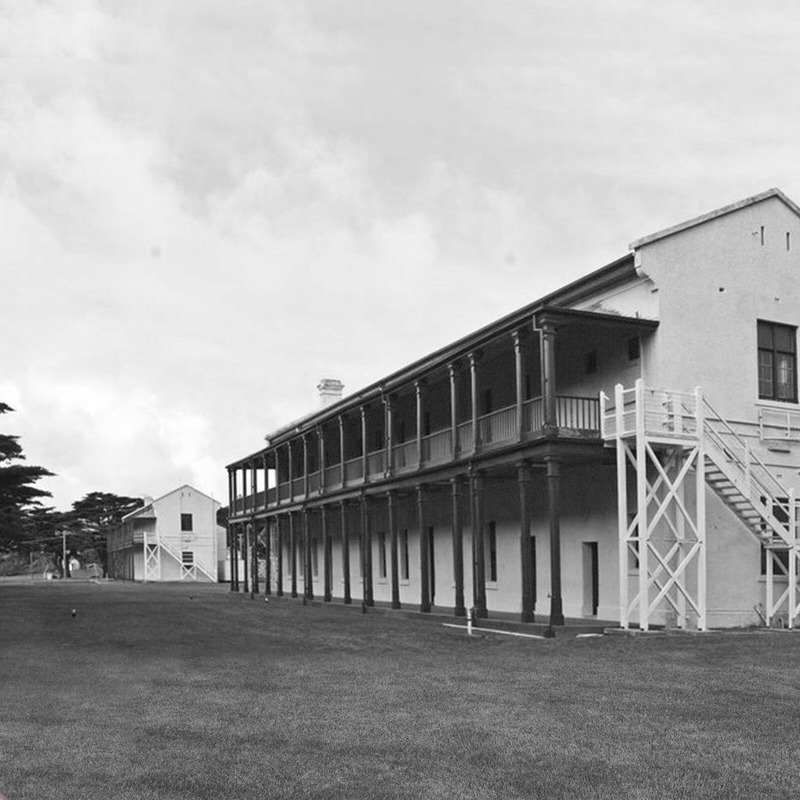Post-Covid Series 3

Architecture hacks: Melbourne 2030
Post-covid, we’re facing a radical shift in how we inhabit cities. We believe that architecture has a critical role to play in this evolution. Through a series of design provocations, our studio is exploring the role of architecture in revitalising now-dormant spaces.
Our first post-covid series explores how to regenerate the thousands of empty parking spaces across the Melbourne CBD, while our second series resurrects the iconic commercial towers of Collins Place into a vibrant self-sustaining residential hub.
In this series we reimagine Victoria’s historic Point Nepean Quarantine Station as a ready-made template to guide our current-day needs at the new quarantine site at Avalon Airport. Established in 1852, the station once provided Victoria defence against introduced maladies, and was used to separate, process, and quarantine travellers and livestock sailing in from Europe.
The station was equipped with all the necessities of a successful quarantine facility, including a secluded location, access to fresh air and sanitisation facilities. Key quarantine methods adopted during past pandemics such as the Spanish Flu included:
-a managed arrival and screening process
-the removal of infected passengers off ships immediately on arrival
-naturally ventilated, openable windows to access fresh air
-occupants isolated in individual rooms
-staff also isolated on the station to prevent infections in the wider community
-and no distributed services linking spaces, preventing direct occupant to occupant contamination.
So why design, test, and build a new quarantine facility when we can repurpose an existing facility within Avalon Airport?
In our design exploration, extra measures are proposed to ensure the facility is up to present-day quarantine requirements, including clear zone separation with an exclusion area monitored by a mounted division, new productive green space around the exclusion zone, and extra sanitization stations.

Travellers are funnelled in from (air)ships, processed and sanitised, and finally able to quarantine in separate quarters before continuing on their journey into Australia.
